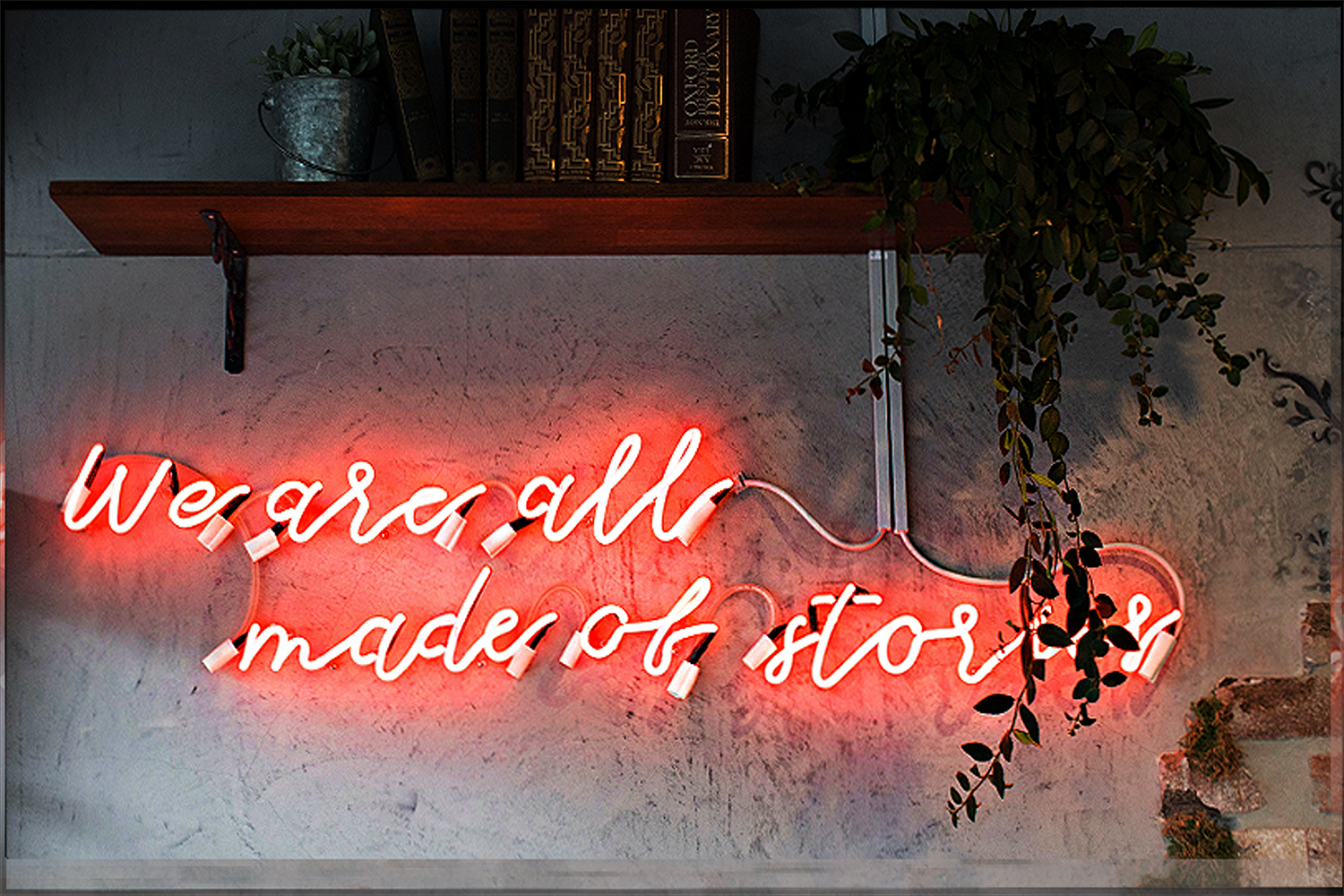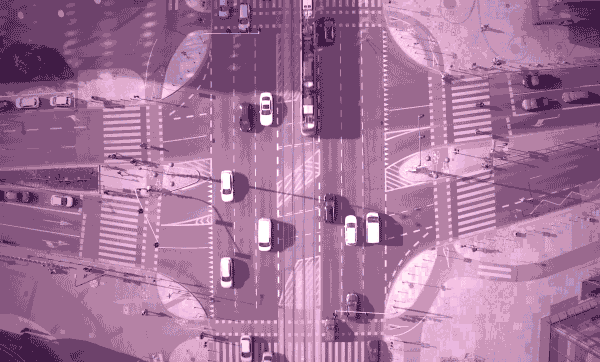Stories have the power to unite us and divide us – but how? We’re exploring both kinds here, through the lens of the human mind and current events. And we look at some inspiring examples of unifying stories from great brands, to understand their recipe.
Hiding in plain sight
We live in interesting times. Looking around ourselves, what do we see? Division, polarity, intolerance? The othering of individuals and groups that don’t look, speak or think like we do? COVID (and how to handle it), climate change, and nationalism .vs globalism are just a few of the issues on which we seem to either violently agree OR disagree.
But there’s another viewpoint. In his book Humankind, Rutger Bregman argues very convincingly that we humans are neither instinctively selfish and confrontational, nor ruthless and violent. Instead, we are born to find common ground, cooperate and share. Compassion is our guiding principle.
That’s not so easy to see, especially so in the West, where we’ve been conditioned by hundreds of years of philosophical debate and religious doctrine to the contrary. Just take the example of original sin – that we are born guilty, and work for a lifetime to earn our innocence.
Bregman comes by his optimism after taking an unbiased, unconditioned view of human behaviour. When you look for the good, it turns out to be hiding in plain sight.
"The stories we’ll remember were of healthcare workers, inadequately protected, performing daily miracles caring for the sick."
In the deeps of the COVID 19 pandemic, did society crumble into a dystopian, dog-eat-dog nightmare? No. The stories we’ll remember were of healthcare workers, inadequately protected, performing daily miracles caring for the sick. More tellingly, it was about the resurgence of community, with volunteers from all backgrounds risking themselves to look after the vulnerable. This was no localised phenomenon, either: it was universal. Those stories spread. And they brought unity, for a while.
Just for a while. Because we also have to answer the question, why did that unity seemingly fracture, and factionalise into the wellbeing .vs economy camps, or at grass roots the masked .vs the maskless?
Stories unite us: stories divide us.
Bregman has a take on this too. Such was the survival advantage conferred by compassion and collaboration in our hunter-gatherer ancestors that individuals with those traits were both very successful, and very desirable. We chose life partners that made love, not war. In a very real way, we tamed ourselves.
But in our altruistic instincts towards those we love lie the roots of our enmity to ‘others’. We can be caring as individuals, but competitive as groups. The 30,000 years or so since ‘tame’ modern humans emerged are an evolutionary eyeblink. We still carry the innate and opposing behaviours of altruism and enmity.
So when you create a narrative that paints a false dichotomy – say, that mask wearers are antilibertarian – then you can fracture the togetherness between people that otherwise had ‘community’ in common. You can create the conditions for enmity to flourish through the stories you make and share.
"When you create a narrative that paints a false dichotomy - say, that mask wearers are antilibertarian - then you can fracture the togetherness between people that otherwise had ‘community’ in common."
The trajectory of human society didn’t level out in the age of small wandering bands, carefully avoiding each other. We learned to trust and collaborate with those others and the cords that bound us were also stories. Yuval Noah Harari makes the case in Sapiens – A brief history of humankind that shared myths of cosmic significance – creation, the cycles of nature – allowed us to trust strangers. I may not know you, but if we both believe ourselves to be the sons or daughters of Adam, then we already already have much in common. That, argues Harari, was the launchpad for Sapiens’ take over of planet Earth.
And so we arrive at the nub of the paradox: stories can unite us, and stories can divide us. Where better to explore that than through the lens of recent politics.
Donald and Jacinda
The phrase ‘Donald Trump, love him or hate him…’ crops up a lot. And it’s that polarisation which makes an analysis of his storytelling worthwhile. Whatever your views on his politics, it’s fair to day that his narrative and its impact has moved millions to action. How?
As a starting point, consider that this very privileged, white, male, septuagenarian business tycoon doesn’t have much in common with the average American. In fact, that’s true of most politicians, which explains a lot about voter apathy. The ones that make it to the top are those with a narrative that fits the times they live in. Making America Great Again is a wonderful opening line. Like Let’s Get Brexit Done, or Building Back Better, it’s intriguing, optimistic and action oriented. Plus it’s totally vague. From there, Trump’s narrative is defined by what he stands opposed to, rather than what he stands for. It harnesses the enmity that we’re all capable of, by providing us with a rich choice of ‘others’ to pick a fight with.
That’s one of the defining features of the narrative of disunity. Another is that this kind of narrative tells just one side of the story. To believe in it, you have to disbelieve something else. Or at least tune it out. You want to believe that America can rejuvenate its industrial heartlands? Then don’t believe in climate change. You believe in the market? Then you can’t believe in the deadliness of the SARS-CoV-2 virus.
The perhaps uncomfortable truth is that even as it fosters disunity, this narrative can still create some kind of consensus, based on the principle of my enemy’s enemy is my friend. It’s a route to win votes, at least in the short term. But it comes at the cost of a divided polity, a loss of national direction, and ongoing discord.
In complete contrast, Jacinda Ardern, Prime Minister of New Zealand for a second term, believes in and engages with the compassion in all of us, using empathy. Her narrative is about shared wellbeing for all, rather than growth at any cost. Her style is clear and consistent, and she delivers both the soothing and the sobering messages with equanimity and crystal clarity. New Zealanders feel she’s got their backs. That she stands among them, rather than preaching to them.
Her narrative has more than a powerful emotional resonance – it mobilises too. When her government introduced some of the toughest COVID measures on the planet, she didn’t shy away from how hard it would be on individuals and the economy. But she was also able to articulate how Team New Zealand would get to the other side, faster and better equipped to prosper once again. The goal was not merely to flatten the curve of COVID cases, but eliminate the virus. And that narrative is clearly working.
Jacinda Ardern’s is a unifying narrative. Unifying narratives tell both sides of the story. You can believe in good jobs and climate change. And the broader the range of beliefs, the more stories you’re likely to share with people and groups who are otherwise dissimilar to you. It builds trust, accord and networks of collaboration. Unifying narratives can include difficult choices: should we de-grow the fossil fuel sector to boost growth in sustainable energy jobs, for example. Unifying narratives equip you to make choices from an informed viewpoint.
Brands trump politics
When it comes to narratives, politicians could learn a lot from brands. No one needs a brand. Not like they need clean air, food on the table and a roof over their heads. Or an education, access to welfare and healthcare, freedom of speech, basic human rights, safety and security. It would be easy to think that nothing trumps the political narrative. Yet brands intermingle and engage in our lives with an intimacy that politicians can only dream of. Millions of citizens judge them every single day – not every four years. And the brands that do best choose the unifying route.
"Brands intermingle and engage in our lives with an intimacy that politicians can only dream of."
Every great brand is a story well told. Brands with longevity tell a unifying story. They need to be inclusive. But they also know that they are not for everyone. Helping a consumer to decide that a particular brand is not for them is part of the job of the unifying brand story. After all, making an informed choice not to choose a particular brand can be as empowering as choosing it.
Before digging any deeper it’s worth taking a look at one of the world’s best known brands – Apple. Like every good story, there is a protagonist and an antagonist. Apple’s antagonist is complexity; its protagonist, simplicity. Once you understand that, the Apple story is remarkably straightforward and consistent. Because at some level all of us appreciate simplicity. There’s a trade off, of course. It’s USB-C, or nothing. Apple’s platforms, or nothing. But it is a trade off we can consciously make, maybe grateful that it is so clear cut. If you want to upgrade memory – Apple’s not for you. If you like to slide an SD card direct into your laptop, Apple’s not for you. Apple’s tribe is huge. And none of us is confused about whether we belong or not.
Here are some other unifying brand stories to explore. Some you thought you knew, and some you may not have met before.
Bookshop.org
Think of Amazon as a massive marketing and logistics machine, supplied by a thousand huge tin sheds. Well, Bookshop is a marketing and logistics machine supplied by a million local bookshops. It’s a new business – started just before lockdown by Andy Hunter – with a huge social mission: let’s put small booksellers on the same playing field as the big guys. Let’s help them prosper, and in doing so preserve all the wonder, joy and rewards of having bookshops on the high street and at the heart of communities.
IKEA – The future of furniture is circular
In the IKEA story the protagonist is excellent design, and the antagonist is premium pricing. IKEA is a democratising brand – unifying in its essence. If you own books, you almost certainly own at least one Billy bookcase. But now the brand is going much further. It has committed to becoming 100 per cent circular by 2030. Circular means that your products of today are also your raw materials of the future. Built from 100% recycled materials, and to be 100% recyclable. Every product. Every ounce of packaging. It’s massive. Soon, we can all afford to be conscious consumers.
Ecoalf – Because there is no Planet B
A BCorp certified fashion brand, overturning the way the fashion industry works. No more seasons that encourage unnecessary buying, and no more overproduction even if it cuts profits. Serious about taking positive action to mitigate climate catastrophe, and doing business for good.
Hiut Denim – This town is going to make jeans again
Pioneers of the unifying story to build a clothing brand. Their story pivots on social justice, not climate change, and it’s powerful. ‘This town is going to make jeans again’ resonates way beyond its local roots. It’s grown a community of makers and doers who are proud to wear jeans made by Welsh denim masters.
7 lessons for creating a unifying story
- Tell a story that’s bigger than you are, and invites people to ‘count themselves in’.
- Put a pin in that landscape for your business. Stand in that wider context.
- Make that story your business purpose.
- Integrity matters. You have to mean it. Greenwash and purpose wash won’t work.
- Create depth. Depth of knowledge and commitment. Unifying stories don’t create empty slogans. You can interrogate them and find more answers.
- Don’t build a market: Start a movement.
- Make people care. Appeal to heart and head.





Great piece of writing Andy. That old term ‘divide and conquer’ has never been more relevant – when it is the exact opposite of what we need to move forward. How to we UNITE and conquer FOR community, FOR democracy?